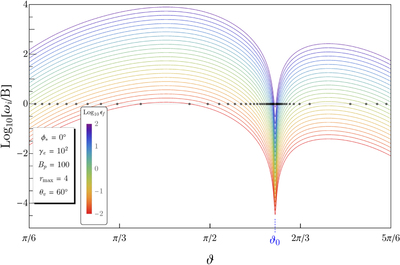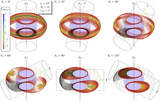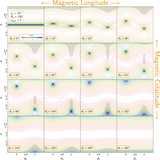Image Details

Caption: Figure 1.
Curves representing the ratio of ﹩{\omega }_{i}/B﹩ as a function of colatitude ﹩\vartheta ﹩ along a meridional field line (﹩{\phi }_{* }=0^\circ ﹩) with locus ﹩{r}_{{\rm{\max }}}{\sin }^{2}\vartheta =r,\mathrm{with}\,{r}_{{\rm{\max }}}=4﹩. The range of colatitudes displayed, ﹩\pi /6\leqslant \vartheta \leqslant 5\pi /6﹩, spans the complete domain between the footpoint colatitudes ﹩{\vartheta }_{\mathrm{fp}}﹩ for this ﹩{r}_{\max }﹩. The curves are color-coded as listed in the inset according to the final photon energy ﹩{\varepsilon }_{f}﹩, in units of ﹩{m}_{e}{c}^{2}﹩, ranging from keV X-rays (red, bottom) to almost GeV energy gamma rays (purple, top). The polar field strength is ﹩{B}_{p}=100﹩, and the observer viewing angle is ﹩{\theta }_{v}=60^\circ ﹩, while the electron Lorentz factor is ﹩{\gamma }_{e}={10}^{2}﹩. Resonance interaction points (black) where the curves intersect the horizontal ﹩{\omega }_{i}=B﹩ line are marked; these are solutions of Equation (32). Only a finite range of final energies have access to resonant interactions. The colatitude ﹩{\vartheta }_{0}﹩ of the cusps is given by Equation (34) and is discussed in the text.
Copyright and Terms & Conditions
© 2018. The American Astronomical Society. All rights reserved.












